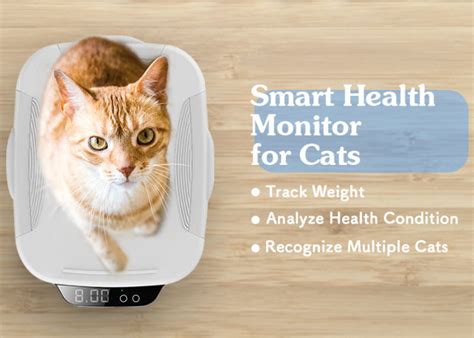Introduction
Cats are independent creatures, often hiding their illnesses until they become severe. Regular health monitoring and early diagnosis are crucial for their well-being. This article explores various methods for monitoring cat health and diagnosing common feline diseases.

Health Monitoring Methods
1. Physical Examination:
- Regular checkups with a veterinarian allow for thorough physical exams, including:
- Temperature and weight checks
- Examination of eyes, ears, and skin
- Auscultation of heart and lungs
2. Bloodwork and Urinalysis:
- Blood tests provide insights into overall health, including:
- Blood cell counts (red and white)
- Organ function tests (liver, kidney)
- Hormone levels
- Urinalysis assesses urinary tract health and kidney function
3. Imaging Techniques:
- X-rays reveal bone and joint abnormalities
- Ultrasound provides detailed images of internal organs and soft tissues
- Magnetic resonance imaging (MRI) offers advanced visualization of the brain and spinal cord
4. Advanced Diagnostics:
- Electrocardiography (ECG) monitors heart rhythm
- Endoscopy allows visualization of internal organs using a camera
- Biopsy involves removing a small tissue sample for analysis
Diagnosis of Common Feline Diseases
1. Feline Leukemia Virus (FeLV):
- A retrovirus that weakens the immune system, making cats susceptible to infections and cancer
- Diagnosis involves blood tests to detect antibodies against FeLV
2. Feline Immunodeficiency Virus (FIV):
- A retrovirus that affects the immune system, leading to chronic infections and other health issues
- Diagnosed through blood tests for FIV antibodies
3. Feline Panleukopenia Virus (FPV):
- A highly contagious virus that causes severe gastrointestinal problems and can be fatal in kittens
- Diagnosis involves blood tests or fecal tests for the virus
4. Feline Infectious Peritonitis (FIP):
- A viral disease that attacks the immune system and internal organs
- Diagnosis is complex and may involve blood tests, imaging, and biopsy
Monitoring vs Diagnosis
Monitoring:
- Routine checks to assess overall health and detect any early signs of illness
- Aims to identify potential problems before they become serious
Diagnosis:
- Confirms the presence of a specific disease based on clinical signs and diagnostic tests
- Guides appropriate treatment and management
Effective Strategies
- Establish a regular veterinary checkup schedule
- Pay attention to any changes in behavior, appetite, or physical appearance
- Seek veterinary advice promptly if any concerns arise
- Consider advanced diagnostics for early detection of complex diseases
- Follow recommended treatments and monitor response closely
Common Mistakes to Avoid
- Ignoring subtle signs of illness
- Delaying veterinary checkups
- Self-treating cats without professional guidance
- Over-vaccinating cats without consulting a veterinarian
FAQs
1. How often should I take my cat for a checkup?
- Recommended frequency varies depending on age and health status, generally every 6-12 months.
2. What are some common signs of illness in cats?
- Lethargy, decreased appetite, vomiting, diarrhea, coughing, and changes in behavior.
3. What are the benefits of early diagnosis?
- Allows for prompt treatment, improving the chances of recovery and reducing pain and suffering.
4. How can I prevent common feline diseases?
- Regular vaccination, avoiding contact with infected animals, and maintaining a clean environment.
5. What should I do if I suspect my cat is sick?
- Contact your veterinarian promptly for an evaluation and diagnosis.
6. How can I care for my cat with a chronic disease?
- Follow veterinary recommendations for treatment, medication, and lifestyle modifications to manage the condition and improve quality of life.
Current Status and Future Directions
Current Status:
- Advances in diagnostic techniques have improved early detection and diagnosis of feline diseases.
- Personalized medicine approaches tailored to individual cats are gaining traction.
Future Directions:
- Development of non-invasive and remote monitoring technologies for real-time health assessment.
- Use of artificial intelligence and machine learning to analyze data and improve diagnostic accuracy.
- Exploration of novel treatment options and therapies for feline diseases.
Conclusion
Cat health monitoring and diagnosis are essential for ensuring the well-being of our feline companions. By understanding the methods available, recognizing symptoms of illness, and seeking veterinary advice promptly, we can provide the best possible care for our beloved pets. Ongoing research and technological advancements hold promise for further improvements in feline health management in the future.





















